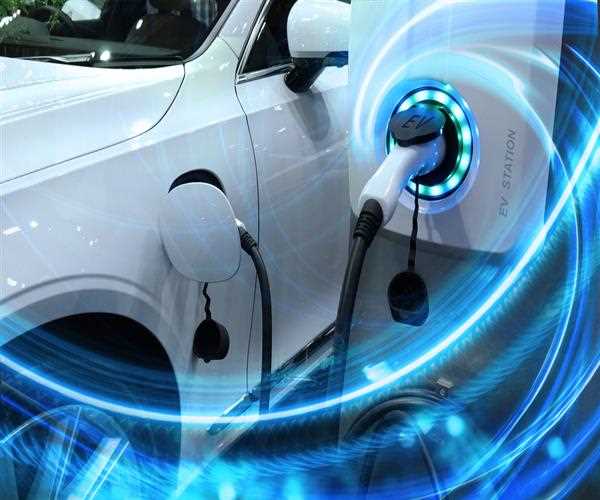Search here

04-Jul-2023 , Updated on 7/4/2023 5:32:02 AM
Rise of Electric Vehicles Driving Towards a Sustainable Transportation Revolution
Highlights
Here is everything you need to know about how electric vehicles are growing in demand
- A Transition toward sustainable transportation
- Reduced dependence on fossil fuels
- Environmental benefits- reduced carbon emissions, air pollution, and noise pollution
- Advancements in battery technology enabling longer driving ranges
- Expanding charging infrastructure
- Government initiatives and incentives promoting EV adoption
- Cost savings- lower operating and maintenance costs compared to traditional vehicles
- Technological advancements in EV design and performance
- Increased availability and variety of EV models from various manufacturers

The world is on the brink of a transportation revolution. The rise of electric vehicles (EVs) has sparked a significant shift in the way we move from one place to another. As concerns over climate change and air pollution continue to mount, the need for sustainable transportation solutions has become more urgent than ever before. Electric vehicles offer a promising pathway to a greener future, and their rapid adoption is driving us toward a sustainable transportation revolution.
One of the key drivers behind the rise of electric vehicles is the growing awareness of the environmental impact of traditional gasoline-powered cars. Conventional vehicles are a significant source of greenhouse gas emissions, contributing to climate change and air pollution. According to the International Energy Agency, the transportation sector accounts for about one-quarter of global energy-related CO2 emissions. Electric vehicles, on the other hand, produce zero tailpipe emissions, making them an attractive alternative for eco-conscious consumers.
Furthermore, advancements in battery technology have played a crucial role in the popularity of electric vehicles. Lithium-ion batteries, which power most electric cars, have become more efficient, affordable, and durable over the years. The increased energy density of batteries allows for longer driving ranges, addressing the issue of "range anxiety" that has been a barrier to EV adoption in the past. As battery costs continue to decline and their performance improves, electric vehicles are becoming a viable and practical choice for everyday transportation.
Governments around the world have also recognized the importance of electric vehicles in achieving sustainability goals and reducing dependence on fossil fuels. Many countries have implemented policies and incentives to encourage the adoption of EVs. For instance, Norway has set a goal to sell only zero-emission cars by 2025 and offers generous subsidies, tax breaks, and toll exemptions for electric vehicle owners. China, the world's largest automobile market, has implemented strict emission standards and provided substantial financial support to promote the production and purchase of electric vehicles. These policy measures have significantly contributed to the surge in electric vehicle sales globally.
In addition to governmental support, the private sector has been instrumental in driving the growth of electric vehicles. Automakers are investing heavily in the development and production of electric vehicles, recognizing the shift in consumer preferences and the potential for long-term profitability. Major players like Tesla, Nissan, and General Motors have introduced affordable electric models with impressive performance and features, making electric vehicles more accessible to the mass market. The expanding charging infrastructure, with an increasing number of public charging stations and home charging options, further enhances the convenience of owning an electric vehicle.
The rise of electric vehicles is not only benefiting the environment but also stimulating economic growth and job creation. The electric vehicle industry has emerged as a significant source of employment opportunities, from manufacturing and assembly to research and development. As the demand for electric vehicles continues to rise, new jobs are being created in battery production, charging infrastructure installation, and software development. This transition towards a greener transportation sector has the potential to transform economies and foster innovation in various industries.
Another key advantage of electric vehicles is their potential to integrate with renewable energy sources. With the increasing penetration of renewable energy in the power grid, electric vehicles can serve as a mobile storage solution, helping to balance electricity supply and demand. By charging during periods of low demand or high renewable energy generation, electric vehicles can store excess energy and discharge it back to the grid during peak hours. This vehicle-to-grid technology not only maximizes the utilization of renewable energy but also provides an opportunity for EV owners to earn revenue by selling excess stored energy back to the grid.
Despite the significant progress made in the electric vehicle industry, several challenges remain. One of the primary concerns is the availability and accessibility of charging infrastructure. While the number of charging stations is steadily increasing, there is still a need for further investment in fast-charging infrastructure, especially in public areas and along highways, to alleviate range anxiety and ensure convenient charging options for EV owners. Additionally, the limited range of some electric vehicles compared to traditional cars poses a challenge for long-distance travel, although this issue is gradually being addressed as battery technology improves.
Furthermore, the extraction and production of materials for batteries, such as lithium and cobalt, raise concerns about environmental and social impacts. Responsible sourcing and recycling of battery materials are essential to minimize the environmental footprint of electric vehicles and ensure the sustainability of the entire lifecycle of these vehicles.
To overcome these challenges, collaboration between governments, industries, and research institutions is crucial. Continued investments in research and development can lead to breakthroughs in battery technology, further improving energy storage capacity, charging speed, and affordability. Governments should provide consistent and long-term policy support, including financial incentives, tax credits, and infrastructure development plans, to encourage both consumers and businesses to transition to electric vehicles.
Education and awareness campaigns are also vital in promoting the benefits of electric vehicles and dispelling myths or misconceptions surrounding them. Public perception plays a significant role in the adoption of new technologies, and highlighting the advantages of electric vehicles, such as lower operating costs, reduced maintenance, and a cleaner environment, can encourage more people to embrace this sustainable mode of transportation.
In conclusion, the rise of electric vehicles is driving us toward a sustainable transportation revolution. With zero tailpipe emissions, advancements in battery technology, supportive government policies, and the commitment of the private sector, electric vehicles are gaining momentum as a viable alternative to traditional gasoline-powered cars. Not only do electric vehicles help combat climate change and improve air quality, but they also stimulate economic growth and job creation.

Student
Economics can be broken down into microeconomics, which looks at individual decisions, and macroeconomics, which is concerned with the economy as a whole. Both types of economics utilize historical trends and current conditions to inform business decision-making and make predictions about how markets might behave in the future. Students who choose to study economics not only gain the skills needed to understand complex markets but come away with strong analytical and problem-solving skills.
Join Our Newsletter
Subscribe to our newsletter to receive emails about new views posts, releases and updates.
Copyright 2010 - 2025 MindStick Software Pvt. Ltd. All Rights Reserved Privacy Policy | Terms & Conditions | Cookie Policy